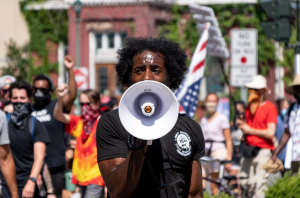‘Til Death Do Us Part: The Life and Times of My 45-Year-Old Men’s Group

My wife, Carlin, will tell you that one of the main reasons we have had a successful 44-year marriage is because I have been in a men’s group for 45 years. There were seven members in the group when we began. Three have died and four of us are still together. Looking at an early photo of the group, we marvel at what a young midlife bunch of guys we were when we first met in 1979. Now I’m 80, Tom is 78, Tony is 77, and Denis is 75.
When the group began we all lived within driving distance of each other in the San Franciso Bay area. Tony later moved to Seattle. The rest of us still live in northern California. As we’ve gotten older, health issues have made it more difficult to meet in person, but we still manage to make it work. In recent years the California members of the group have flown north to meet Tony. This time, Tony flew south and we met at Denis’s home in Calistoga. We started the New Year with a heart-felt retreat January 10-13, 2024.
I am an only child by birth, but since joining the men’s group, I have been gifted with brothers that I love and who love me. We have varied skills and backgrounds. I’m the writer in the group. In my most recent book, Long Live Men, published in 2023, I described “The Seven Stages of Our Men’s Group” and what we have gone through so far. Here are our stages:
- Learning to Trust and Open Up.
- Revealing Our True Selves, Fears, and Insecurities.
- Baring Our Bodies and Souls.
- Learning to Have Fun Together.
- Revitalizing the Group.
- Making a Lifetime Commitment.
- Dealing with Disabilities, Death, and Dying.
In recent years, including in the last meeting, we talk openly about issues of life and death. My wife, Carlin, is 85 and all our wives are aging with us. We are open about issues surrounding our own end-of-life issues as well as those of our spouse’s. Carlin and I have been reading an interesting book by Sallie Tisdale, a fine author and experienced nurse, who has spent ten years with people going through the final stages of life.
The book, Advice for Future Corpses: A Practical Perspective on Death and Dying, is witty, compassionate, and helpful. She says at the outset,
“I never died, so this entire book is a fool’s advice. Birth and death are the only human acts we cannot practice.”
She addresses issues that we’ve all found to be frightening to discuss but are increasingly important in our lives as we age including:
- What does it mean to die “a good death?”
- Can there be more than one kind of good death?
- What can I do to make my death, or the deaths of my loved ones, good?
- What to say and not to say, what to ask, and when—from the dying, loved ones, and doctors.
As I wrote in my own book, Long Live Men,
“Since we decided to stay together for the rest of our lives and not to add any new members to our group, we are more and more aware that there will come a time when the group itself will die.”
As we’ve gotten older, my wife, Carlin and I talk about the great gift and privilege of helping each other prepare for this last phase of our lives.
Ram Dass offers additional guidance in his writings. In his book, Walking Each Other Home: Conversations on Loving and Dying written with Marabai Bush, he says, “We all sit on the edge of a mystery. We have only known this life, so dying scares us—and we are all dying. What would it look like if you could approach dying with curiosity and love, in service of other beings? What if dying were the ultimate spiritual practice?”
He goes on to say,
“Dying is the most important thing you do in your life. It’s the great frontier for every one of us. And loving is the art of living as a preparation for dying. Allowing ourselves to dissolve into the ocean of love is not just about leaving this body; it is also the route to Oneness and unity with our own inner being, the soul, while we are still here.”
For most of my life, I have been terrified of death, my own as well as those closest to me. It has only been in recent years since Carlin has dealt with breast cancer, heart-valve replacement surgery, and two minor strokes (if you can call any stroke minor) that we have been forced to confront our fears and as well as the blessings of our support for each other as we explore what it means to prepare for and have “a good death.”
Ram Dass’s simple words have been comforting:
“If you know how to live and to love, you know how to die.”
Carlin and I have been practicing how to live and to love for 44 years. The men’s group has been practicing for 45 years. It is clearly a forever practice.
Another person who has offered helpful guidance is psychologist James Hillman. In his book, The Force of Character and The Lasting Life, he says,
“Each of us is born with an innate character, the ‘daimon,’ or ‘spirit’ that calls us to what we are meant to be.”
In reflecting on the later years of our lives, Hillman goes on to say,
“Aging is no accident. It is necessary to the human condition, intended by the soul.”
Rather than the well-known stages of life—childhood, maturity, and old age—Hillman expands upon the changes character undergoes in later life.
“First, the desire to last as long as one can; then the changes in body and soul as the capacity to last leaves and character becomes more and more exposed and confirmed until a third piece of the puzzle emerges: what is left when you have left. Lasting, Leaving, Left.”
In our modern world we put a lot of emphasis on productivity and when we are unable to produce many of us feel that we are useless. But when we focus on being, on character, rather than simply on doing and producing, our longer life takes on more meaning. In thinking about my 85-year-old wife, this reflection by Hillman offers a more expanded aspect of our purpose as we age:
“Productivity is too narrow a measure of usefulness, disability too cramping a notion of helplessness. An older woman may be helpful simply as a figure valued for her character. Like a stone at the bottom of a riverbed, she may do nothing but stay still and hold her ground, but the river has to take account and alter its flow because of her.”
When Carlin questions her value in life now that she is retired and not working, I tell her that her job now is to simply walk around town (which she loves to do) and bring her being to the people she encounters. I find, too, as I walk around town, I have a new job in life as I continue in my 80s. It’s simply to be kind and loving to those whose paths I cross—friends, neighbors, strangers, dogs, cats, birds, trees, clouds—the whole community of life in our little community of Willits.
In our fast-paced world where we are always so driven, it’s comforting to know that we can age and still have something important to offer. Our infirmities are not just indicators of a failing body, but an opportunity to deepen our character and prepare for our ultimate departure.
“Suppose you exchange the word ‘leaving’ for ‘dying’ and substitute ‘preparing’ for ‘aging,’” says Hillman. “Then what we go through in our last years in preparation for departure.”
Hillman offers a different, more hopeful, and less fearful way of moving from leaving to left.
“We slow down and go over things in our minds because there is so much to prepare. As the soul comes into the world slowly, taking all the years of childhood to adjust, so it leaves the world slowly, requiring years of old age to pack up and take off.”
Carlin and I are preparing for this ultimate mystery of life. So, too, is our men’s group, as each man take his turn preparing to leave. When the last member of the group, Dick, was close to death, we talked about what remained after we leave. We both felt there was a spirit that persisted after our bodies had gone.
I told him if he could communicate with me from the spirit world, I was open to hearing from him. A week after he died, I was doing my early morning walk and I saw lights shining at the top of a group of tall trees. “Is that you, Dick?” I asked. I had the feeling it was. Ever since, I picture the three men who have left the group, John, Ken, and Dick being on the top branches and the four of us that are still alive on the next highest branches awaiting our turn to join the others on the spirit level.
Love abides. And maybe death is not the end, but the beginning of love manifesting in other forms. We shall see. The group is scheduled to meet again in April. Stay tuned.







